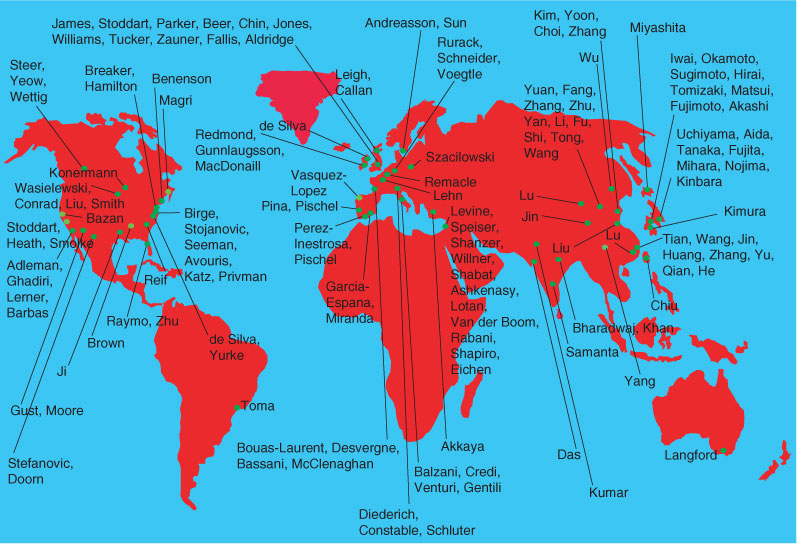Molecular Logic: Ways Forward
A. Prasanna de Silva AA School of Chemistry and Chemical Engineering, Queen’s University, Belfast BT9 5AG, Northern Ireland. Email: a.desilva@qub.ac.uk

A. P. de Silva studied and taught chemistry at the University of Colombo, Sri Lanka and the Queen’s University of Belfast, Northern Ireland. He has also enjoyed periods as visiting professor in Louvain-La-Neuve (Belgium), Cachan (France), Bordeaux (France), Strasbourg (France), Peradeniya (Sri Lanka), Kandy (Sri Lanka), Nara (Japan), Bangkok (Thailand), and Shanghai (China). With his coworkers, he had the chance to publish the first experimental molecular logic gates in the primary literature. |
Australian Journal of Chemistry 63(2) 146-147 https://doi.org/10.1071/CH09441
Published: 26 February 2010
The development of molecules that process data befits our information age.[ 1 – 11 ] As people’s fascination with the internet and mobile communications grows, the transformational nature of computing on society is becoming clear. It is also dawning on people that their most personal computer sits between their ears. Some of the capabilities of this molecule-based miracle, e.g. person recognition, put the best silicon computers to shame. Learning to emulate aspects of both these machines within laboratory molecules is an enterprise ideally suited to chemists. The central idea here is that chemical reactions can be viewed as a reagent input joining with a substrate device resulting in an observable change as the output.
The field of molecular logic has grown from small beginnings to encompass workers from widely different places and backgrounds (Fig. 1). Herein lies the vibrancy of the field. How can this momentum be carried into the near future? Some of the avenues of current growth which promise to propel the field forward deserve some reflection.
-
Searching for more input and output combinations to complement the collection already available. Old favourites, such as simple ion inputs and fluorescence outputs, are still the most convenient to test new device concepts, e.g. self-assembled logic gates. The willingness to view old and new phenomena in chemistry and elsewhere from a Boolean perspective will be important in this regard.
-
Exploring new ways of serially integrating molecular logic gates. Recent instances of functional integration achieved with cuvet arrays and of physical integration accomplished with DNA single strands are encouraging.
-
Demonstrating new examples of everyday computational situations with molecular logic systems. Arithmetic, gaming, de/multiplexing and security codes have been particularly appealing lately.
-
Expanding the approaches available for reconfiguring molecular logic systems. This allows more flexible use of known gates. Simultaneous reconfiguring will also be interesting in view of topical discussions on superposition in quantum computing scenarios.
-
Embedding logic processing within molecular sensors. This will add capabilities such as diagnostics, ‘laboratory-on-a-molecule’, and increased selectivity. Such empowering of sensing can yield beneficial applications in the near-term.
-
Applying molecular logic gates as identification tags for large populations of small objects and embedding logic processing within living cells. Locating applications which concern spaces too tiny for silicon computing devices to enter, should be a real impetus to this young field.
If these half-dozen avenues yield a fraction of their promise, the field of molecular logic and computing should attract fresh bright minds and should have a long life ahead.
[1]
[2]
[3]
F. M. Raymo,
Adv. Mater. 2002, 14, 401.
| Crossref | GoogleScholarGoogle Scholar |
CAS |
| Crossref | GoogleScholarGoogle Scholar |
| Crossref | GoogleScholarGoogle Scholar |
CAS |
| Crossref | GoogleScholarGoogle Scholar |
CAS |
| Crossref | GoogleScholarGoogle Scholar |
CAS |
| Crossref | GoogleScholarGoogle Scholar |
CAS |
| Crossref | GoogleScholarGoogle Scholar |
CAS |




